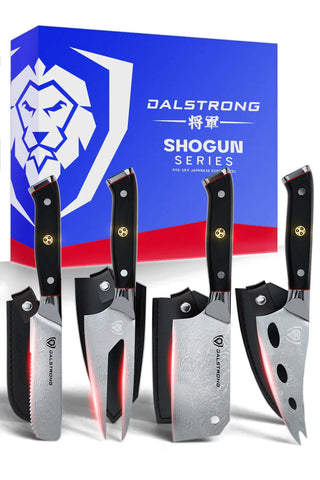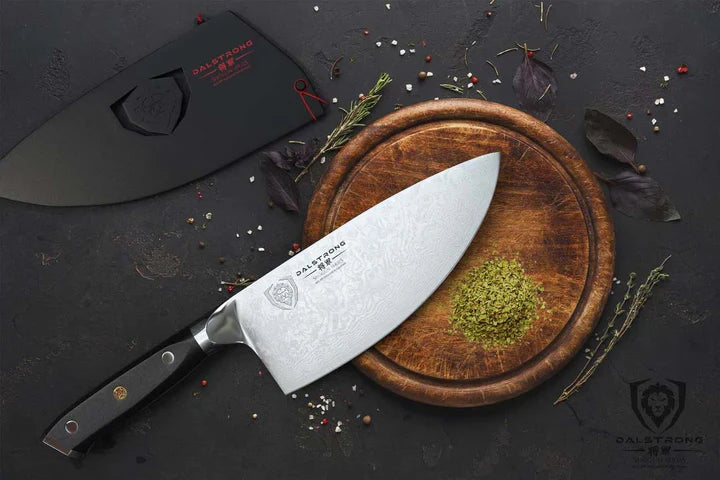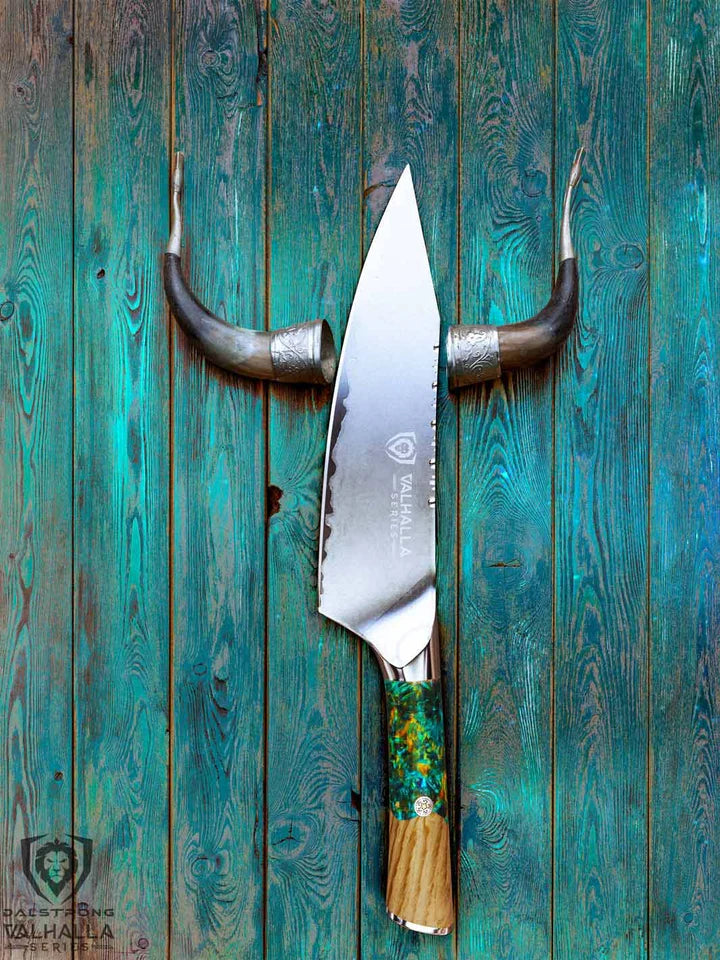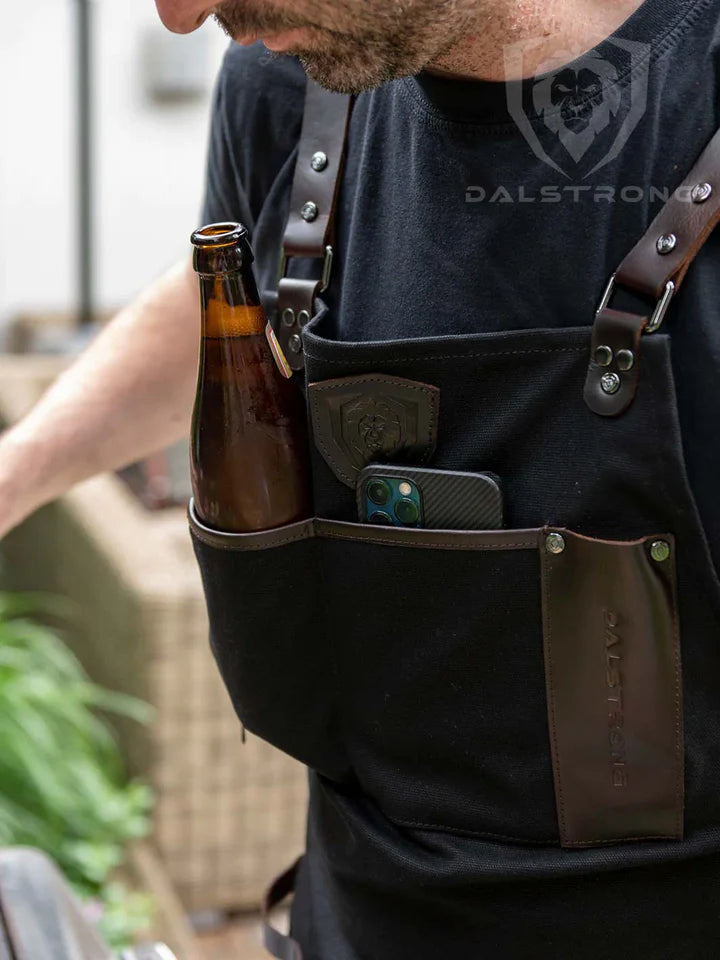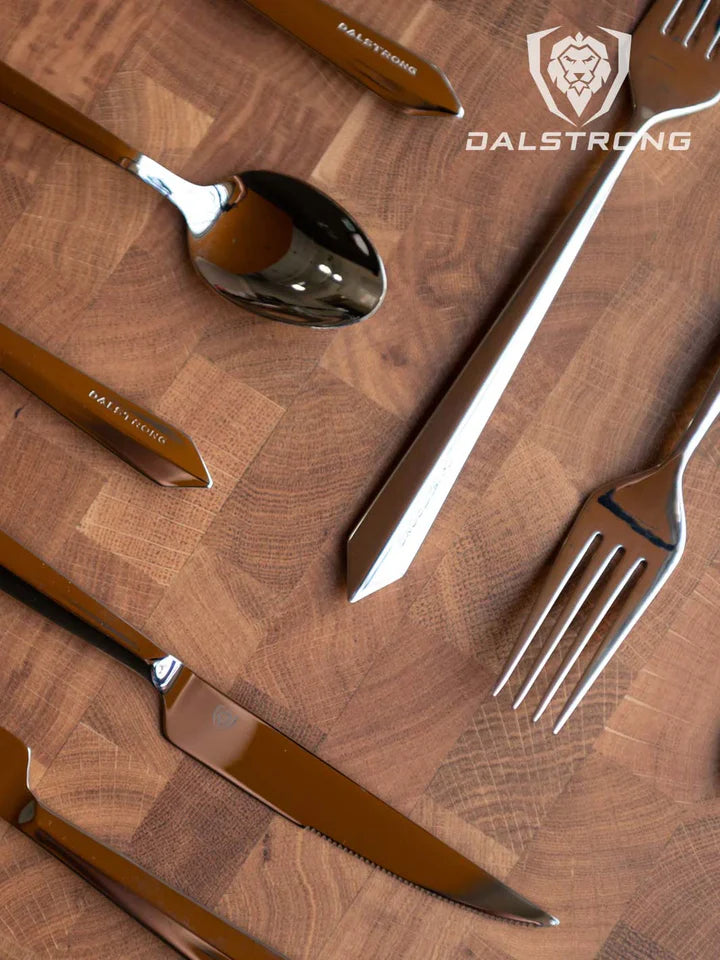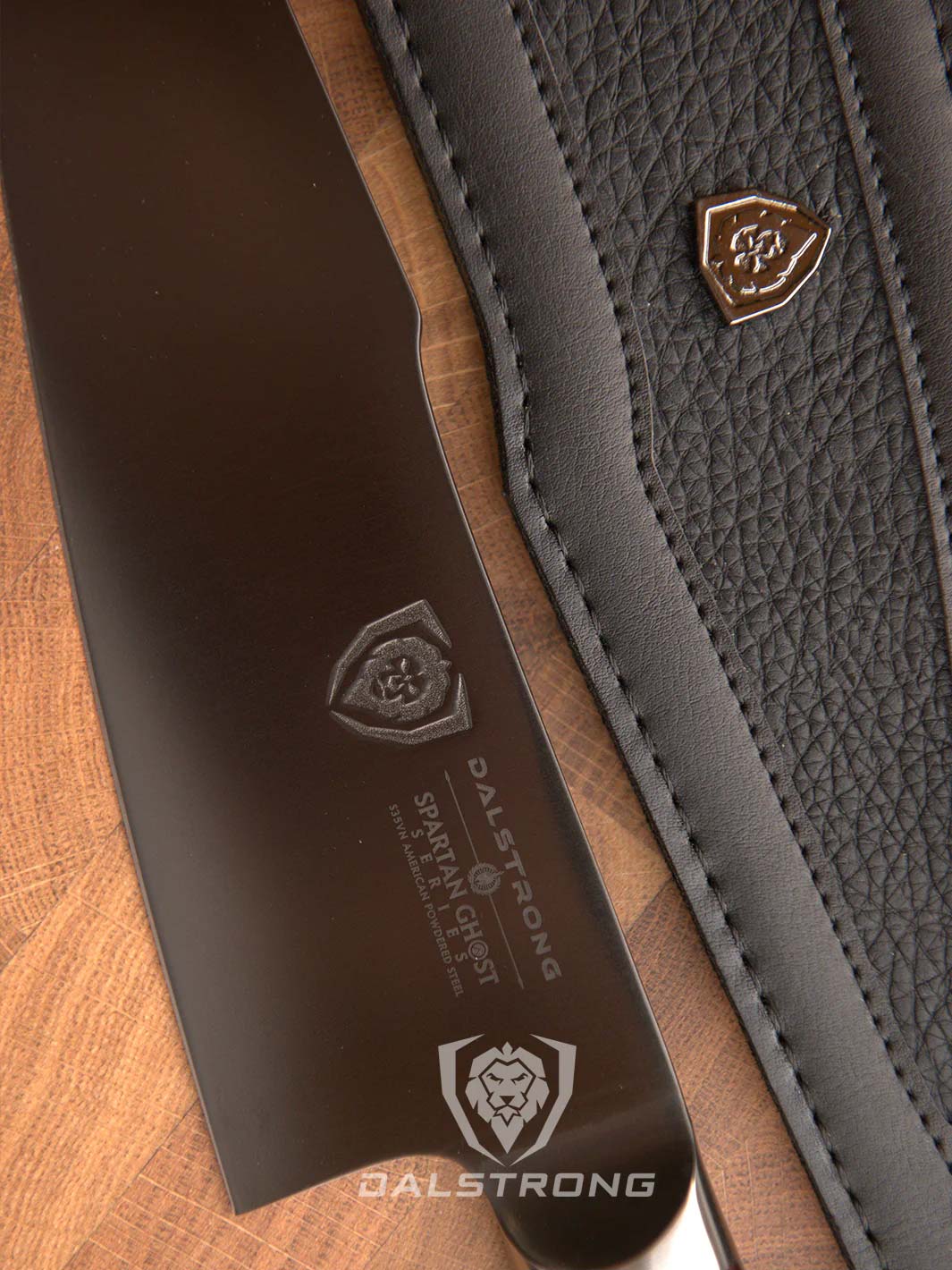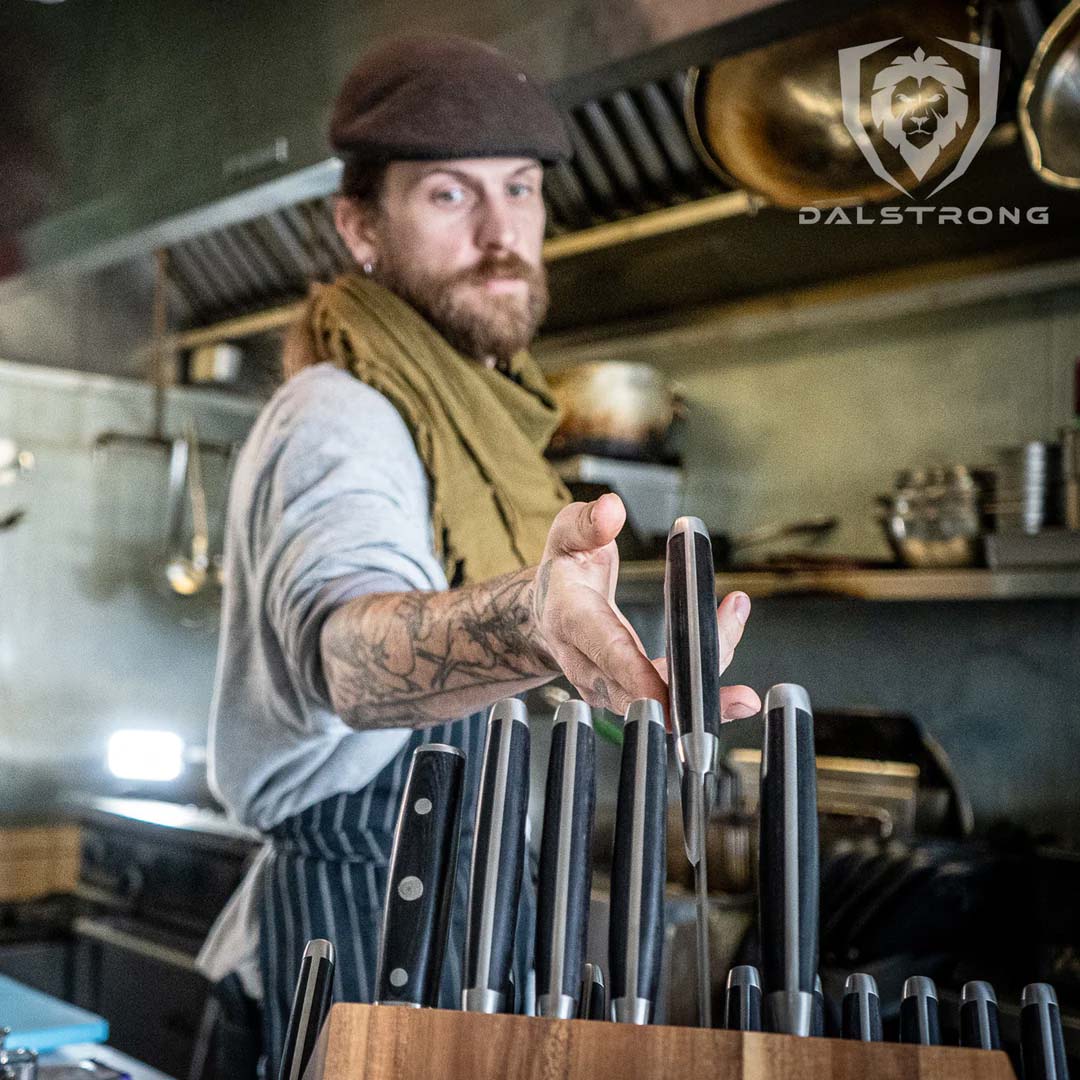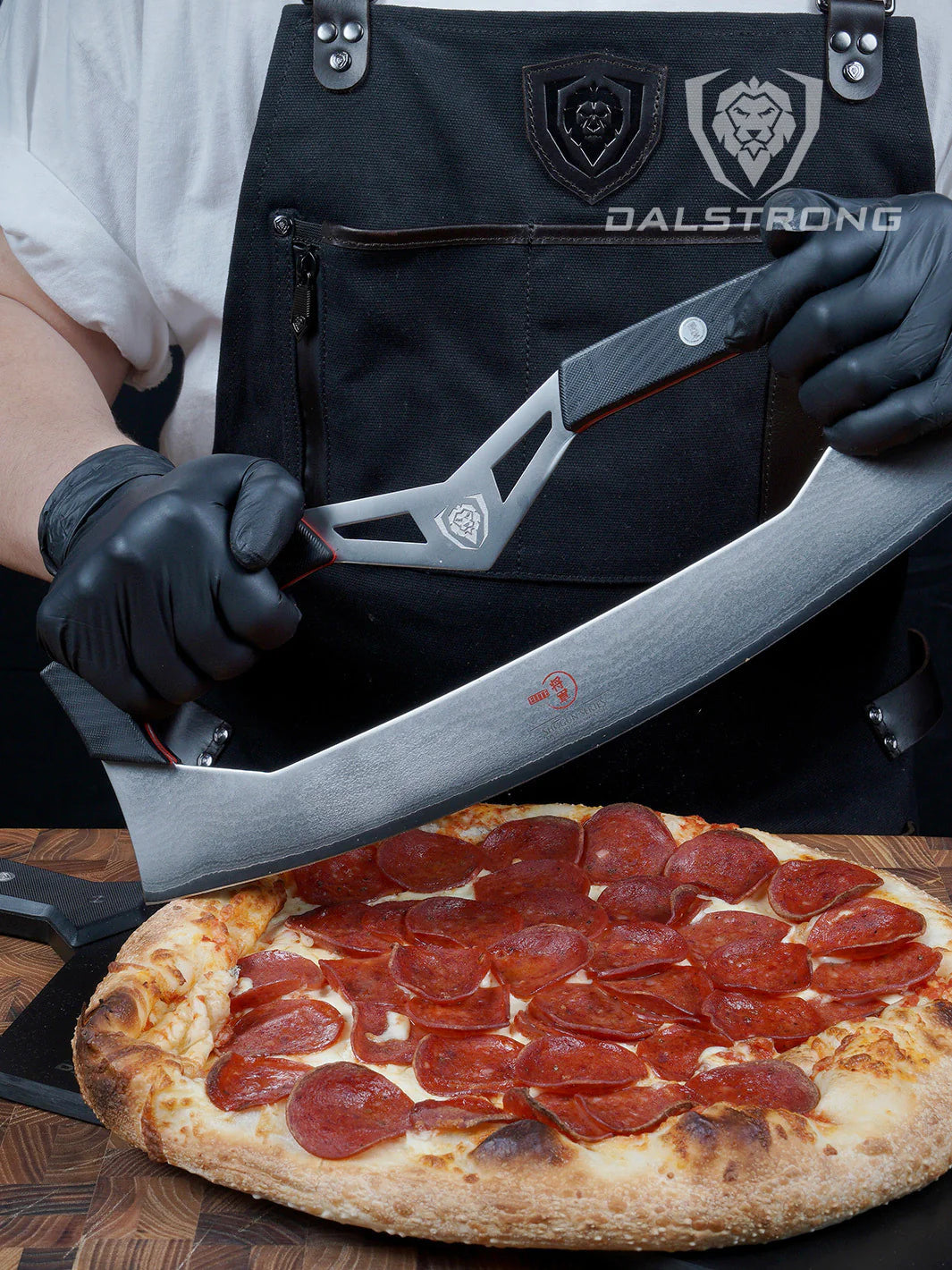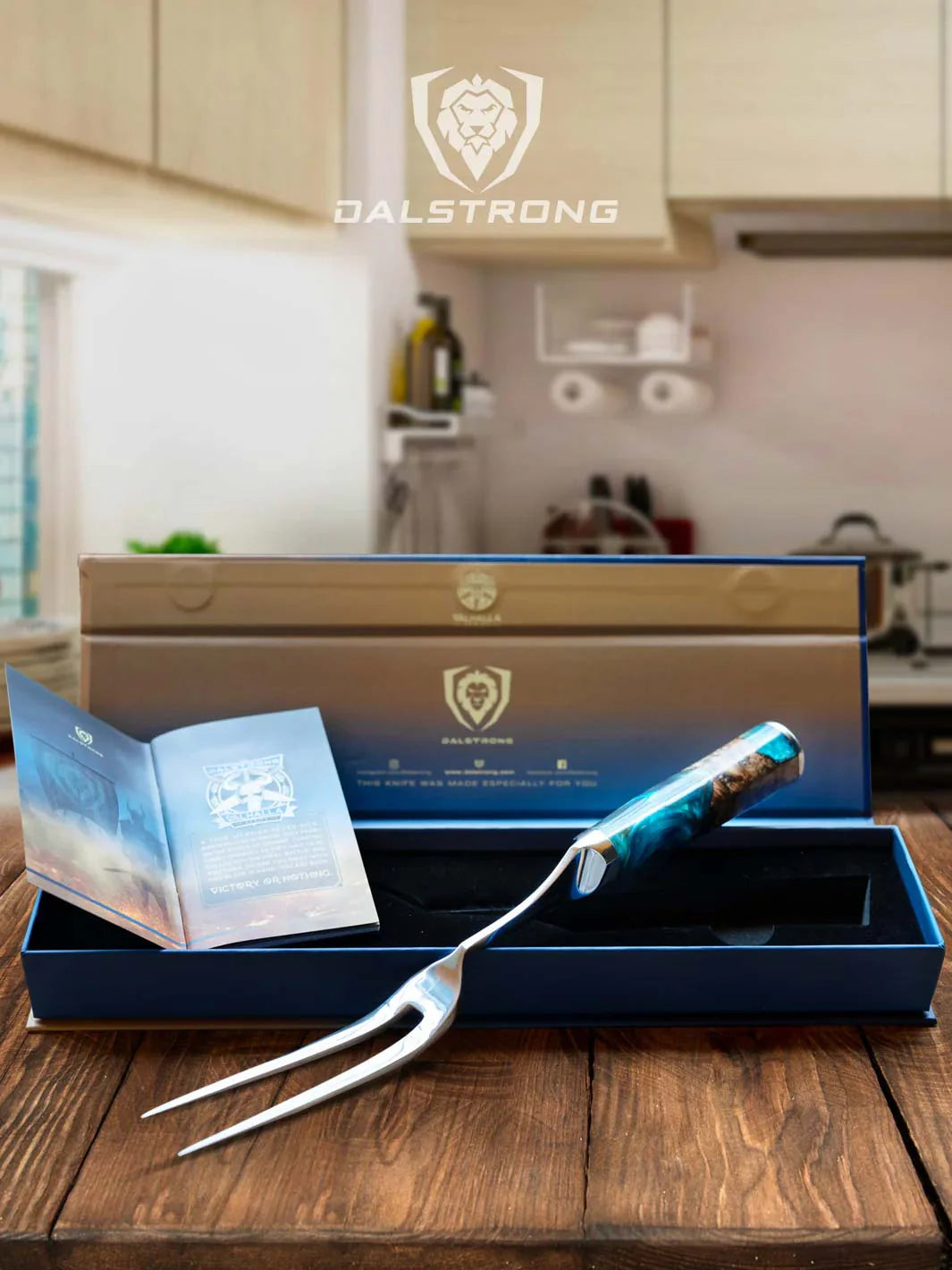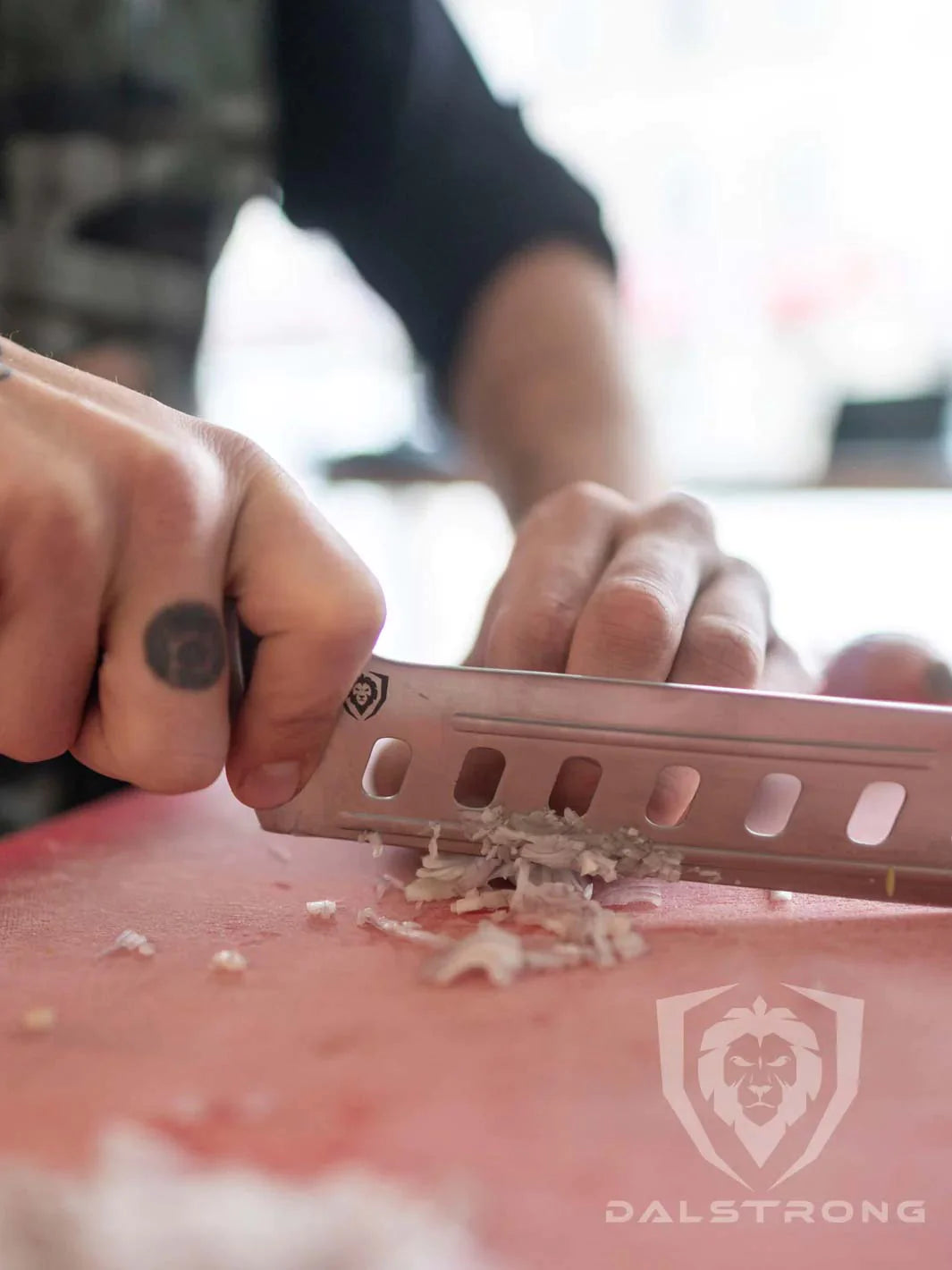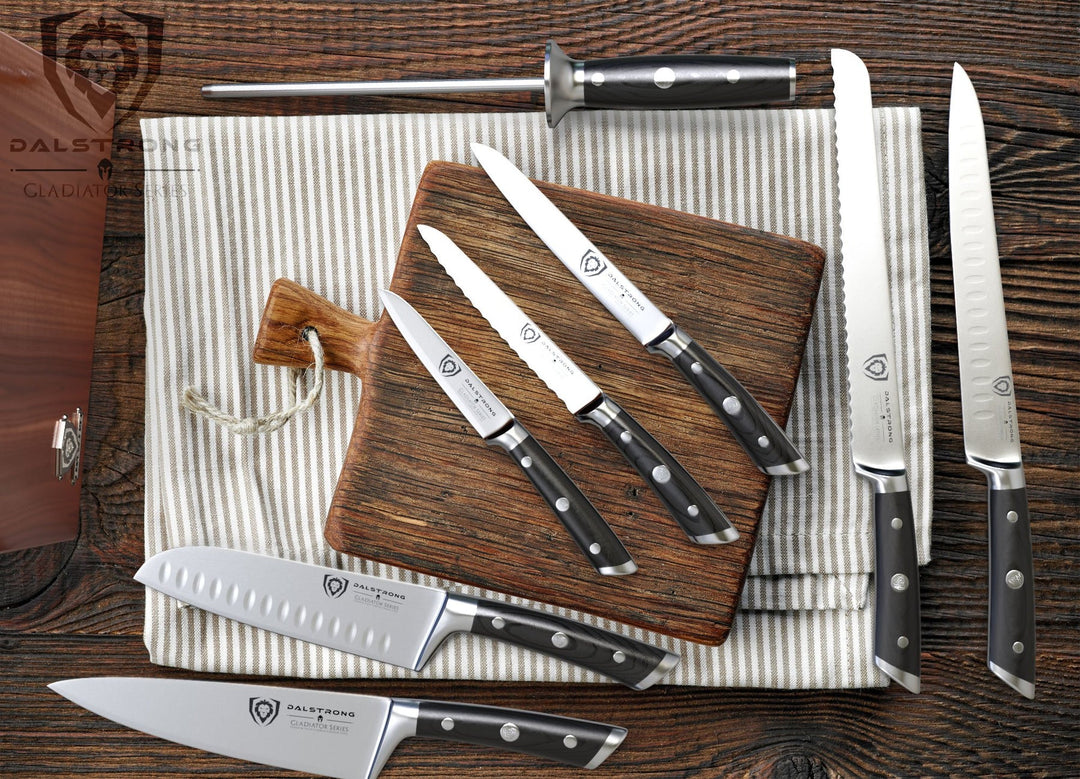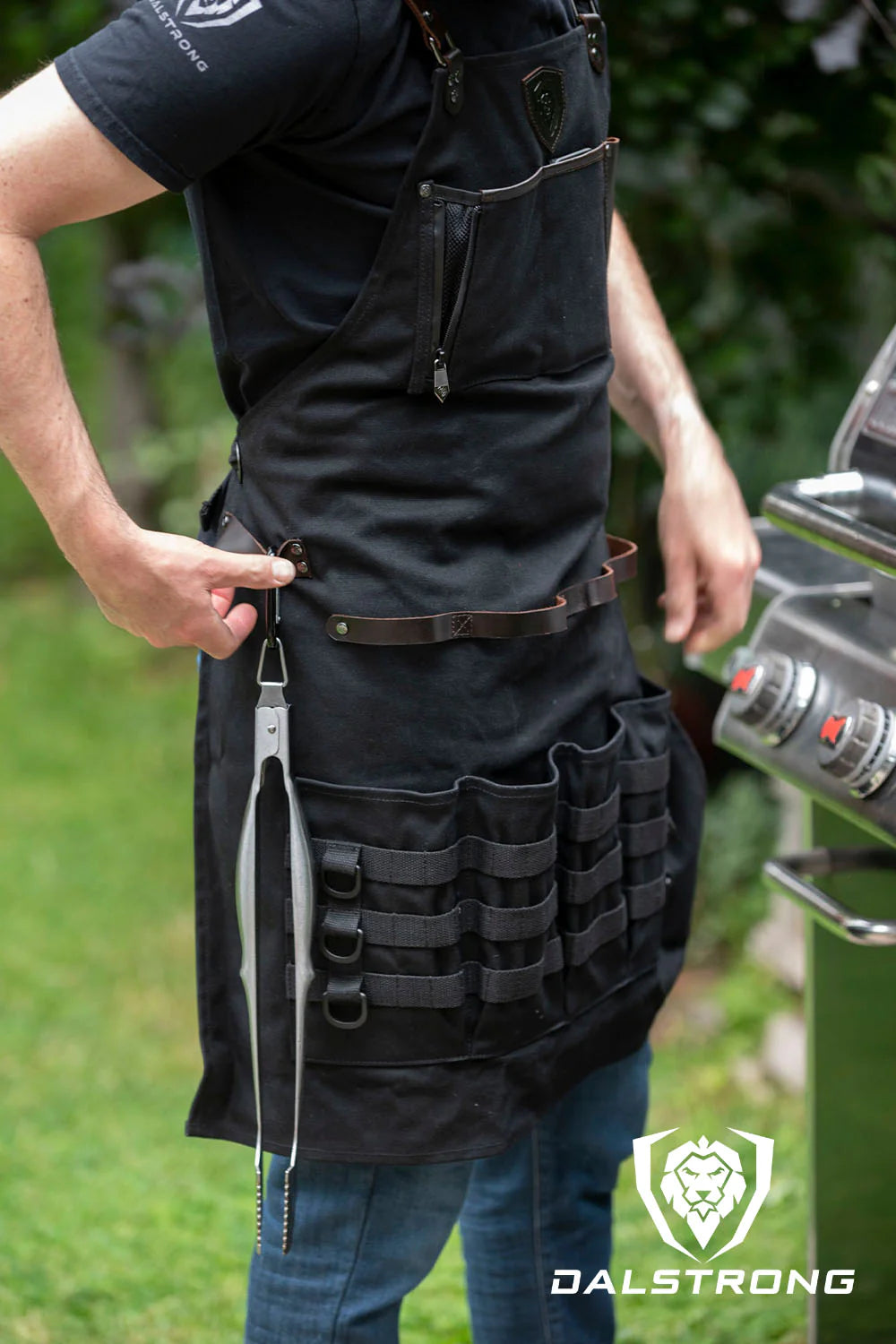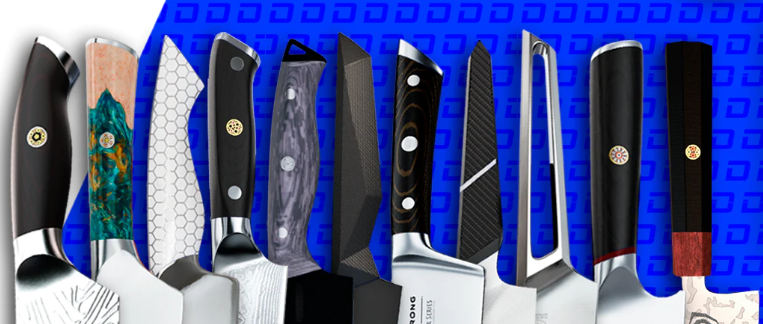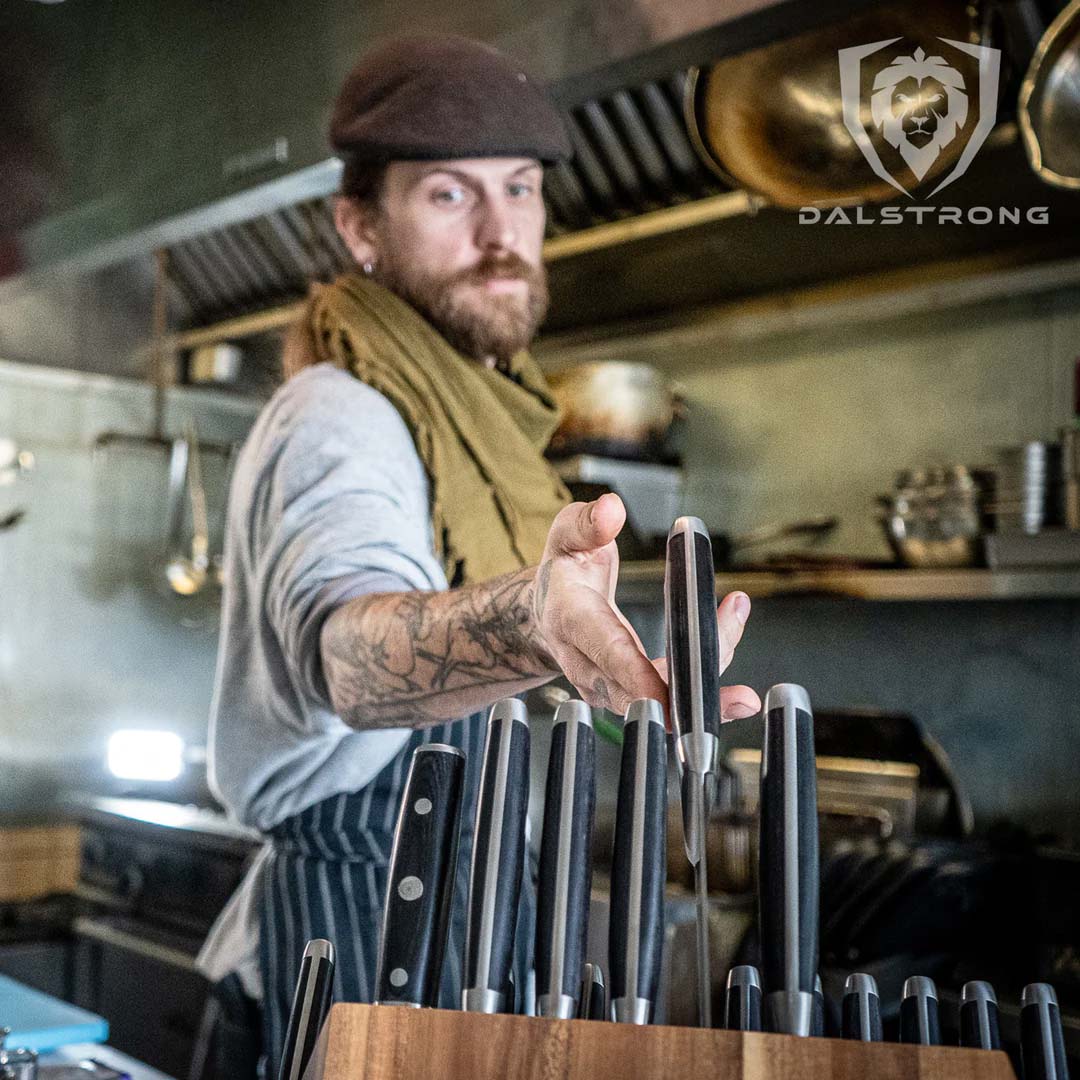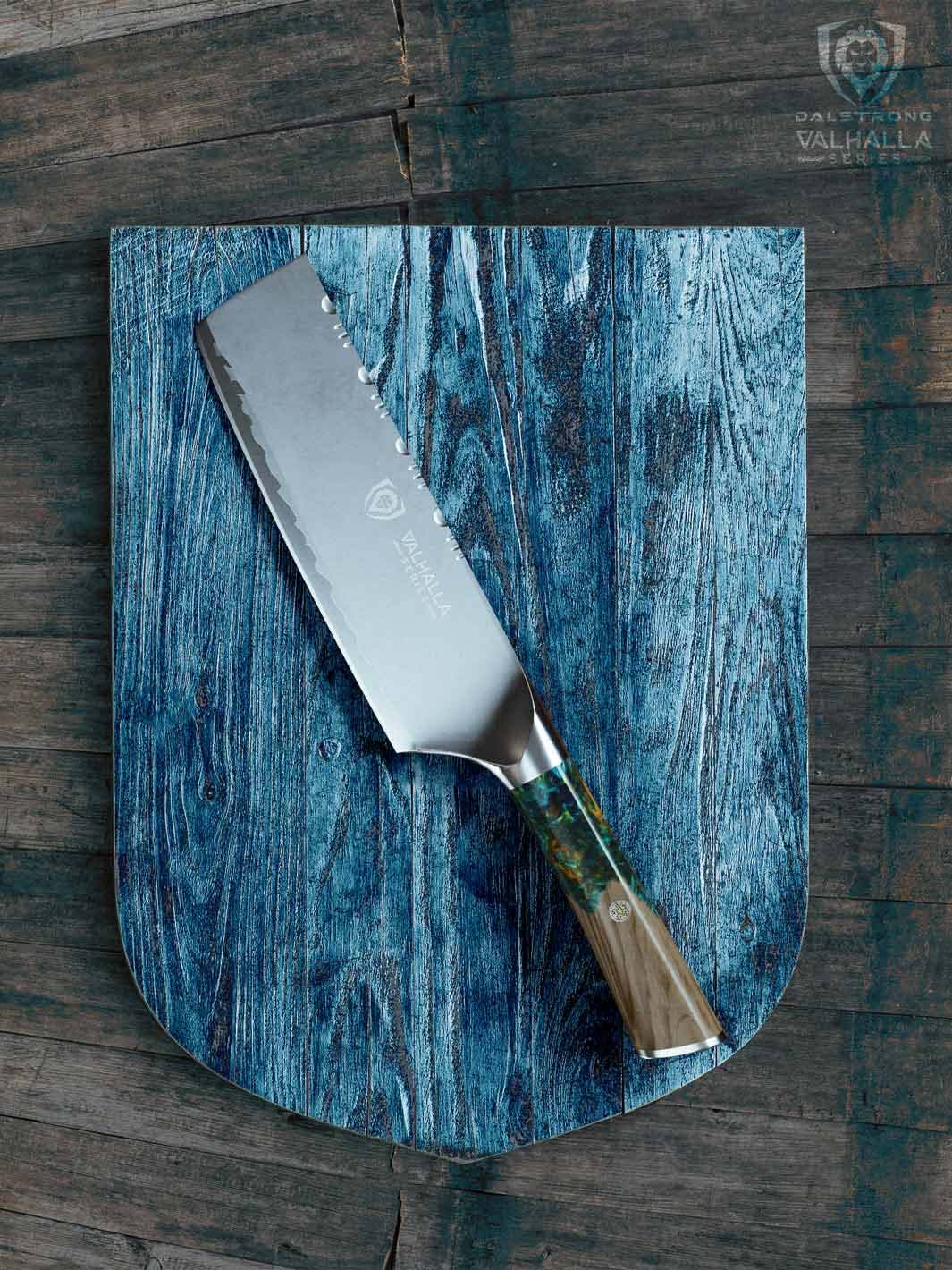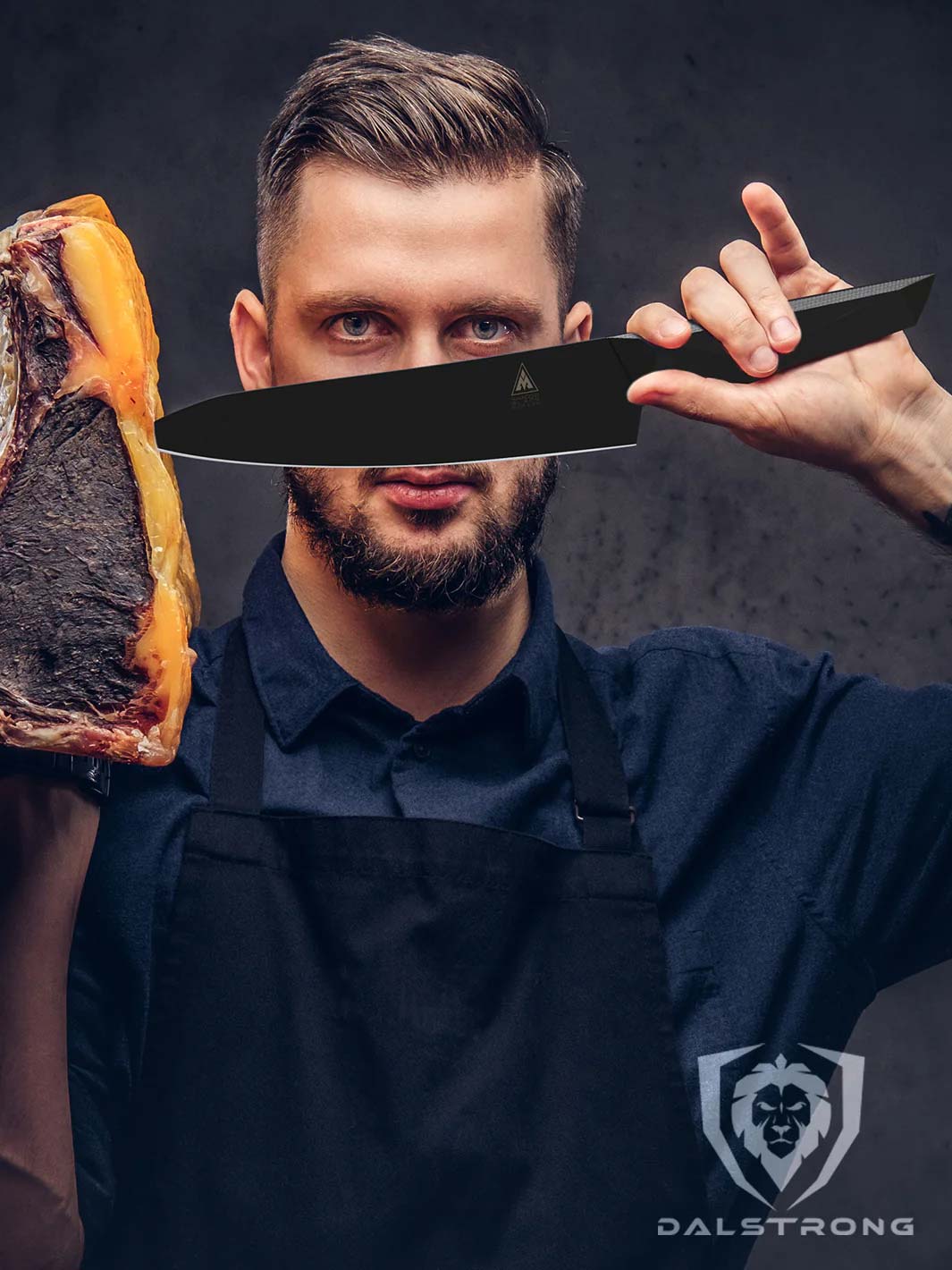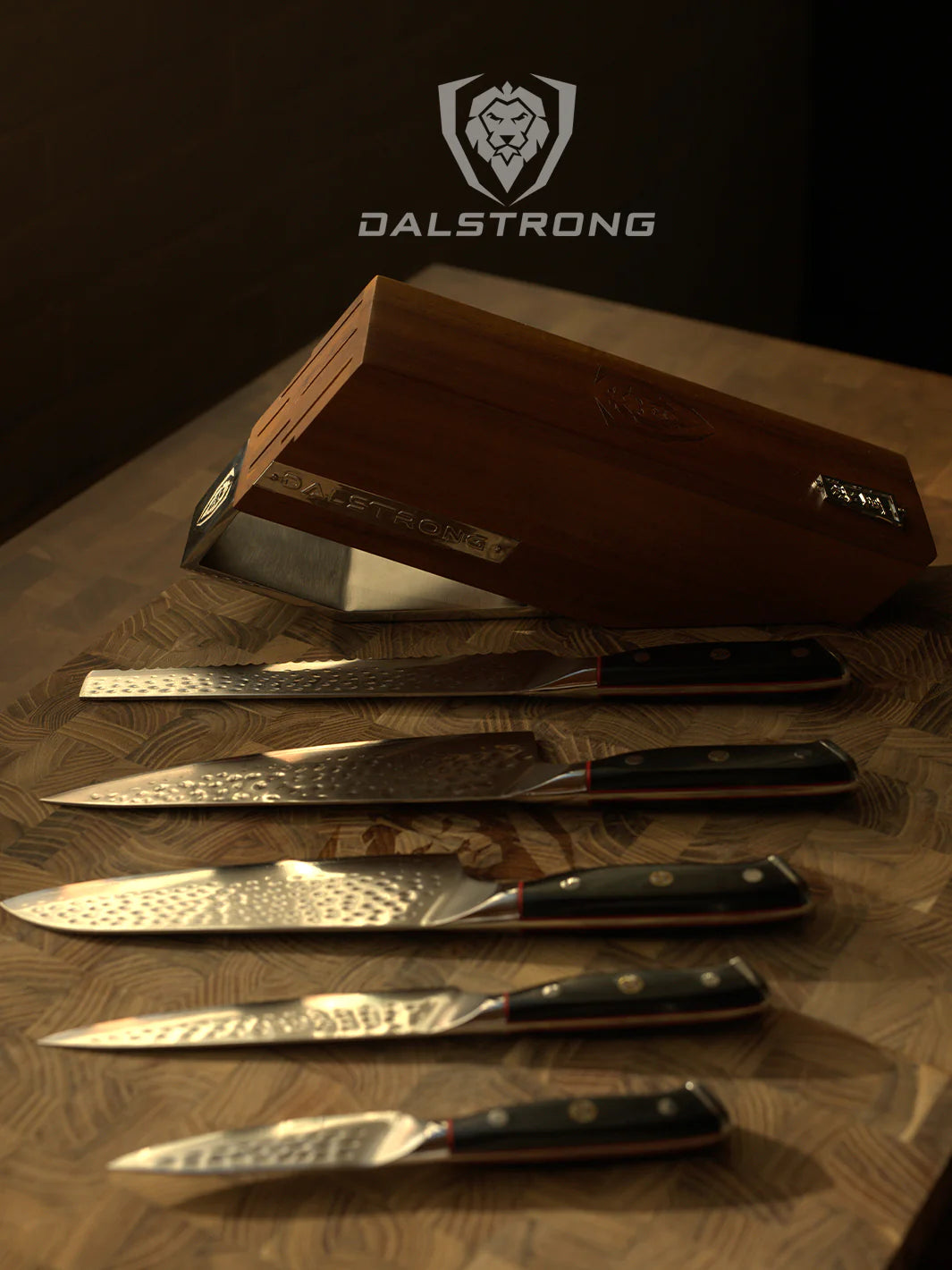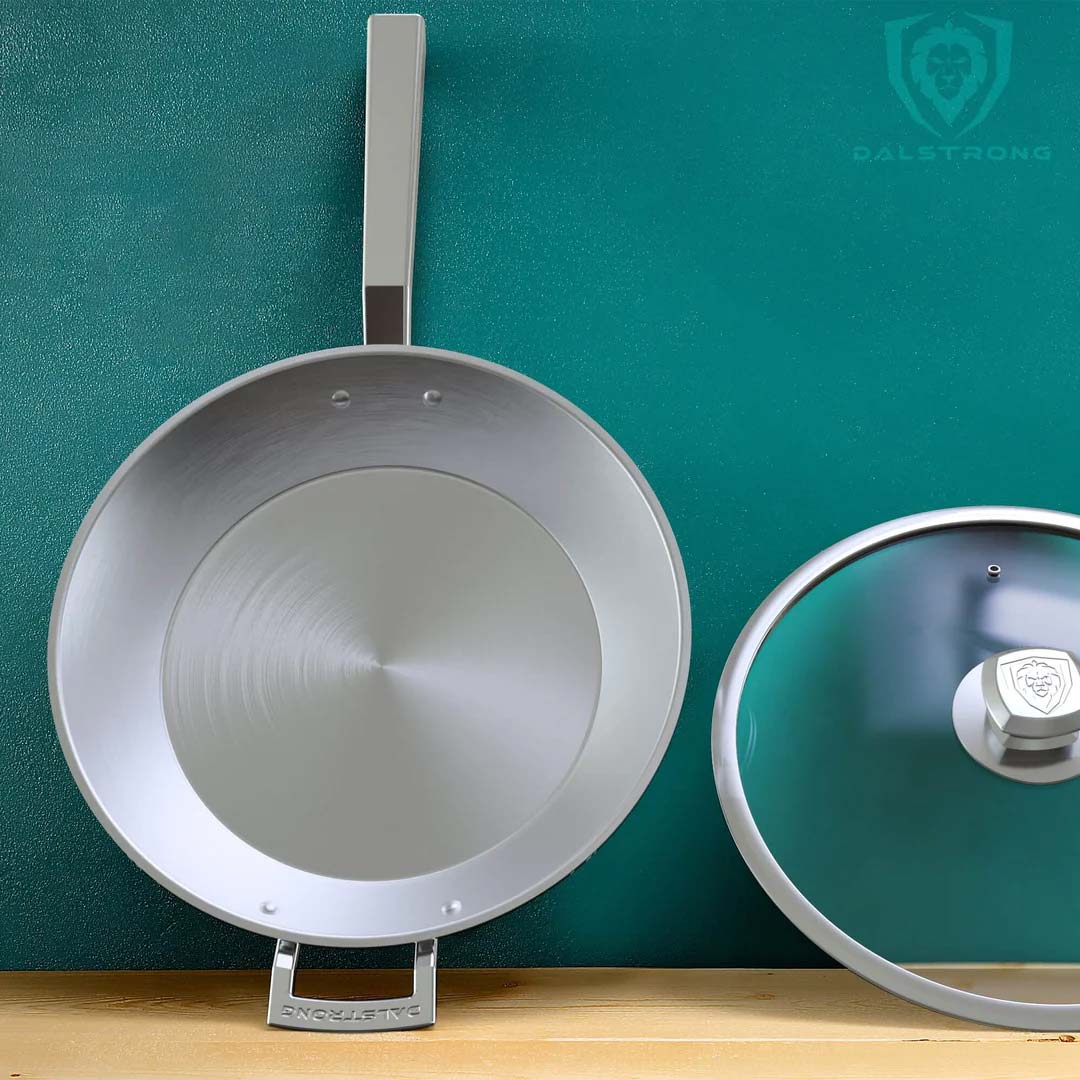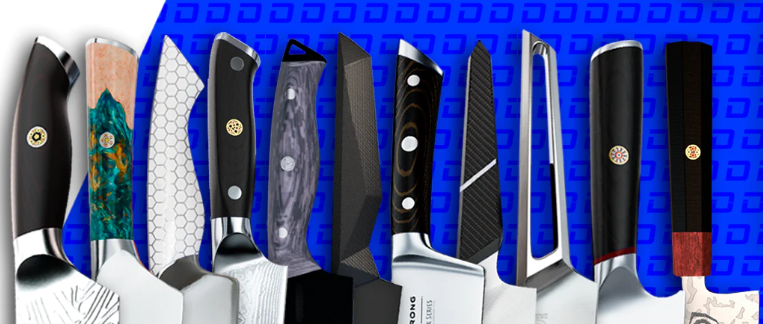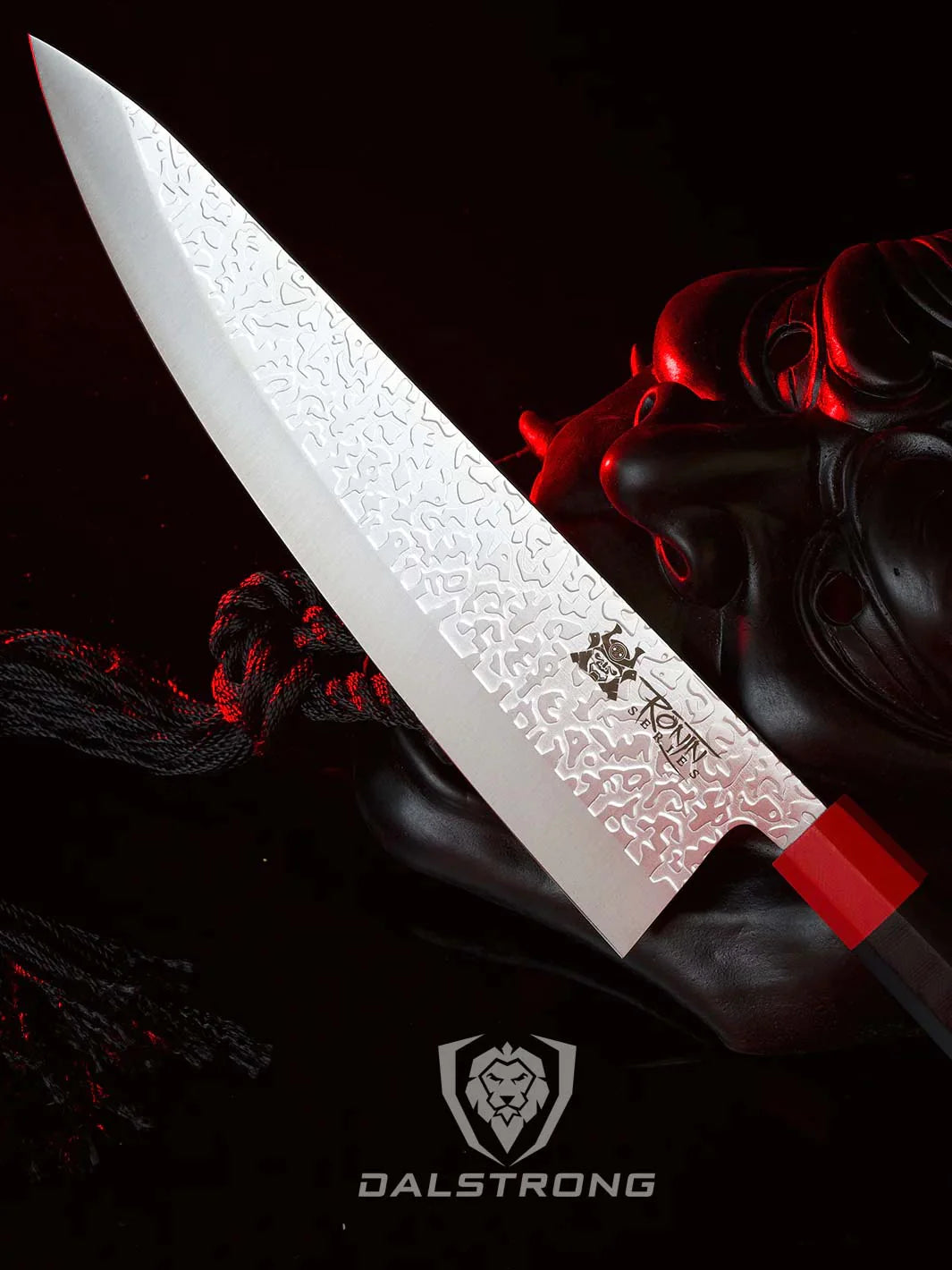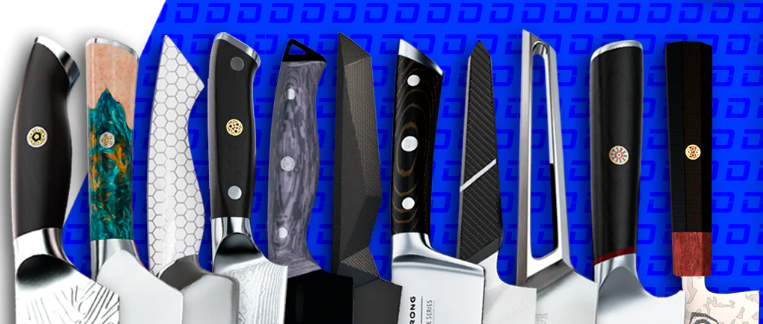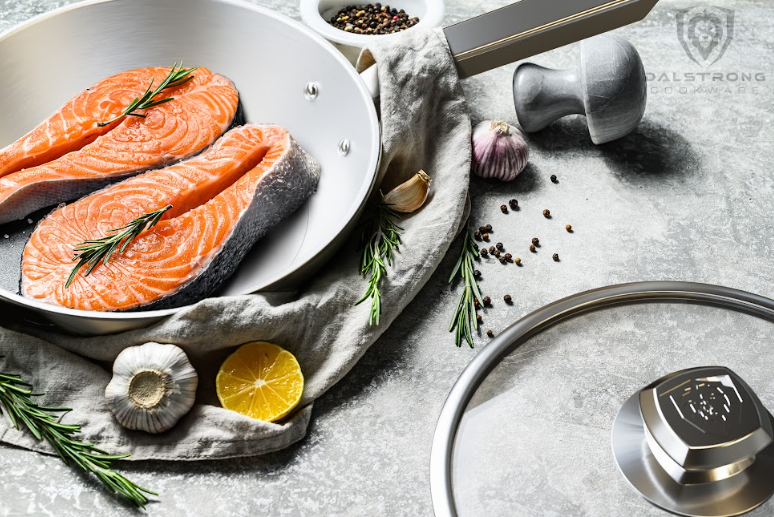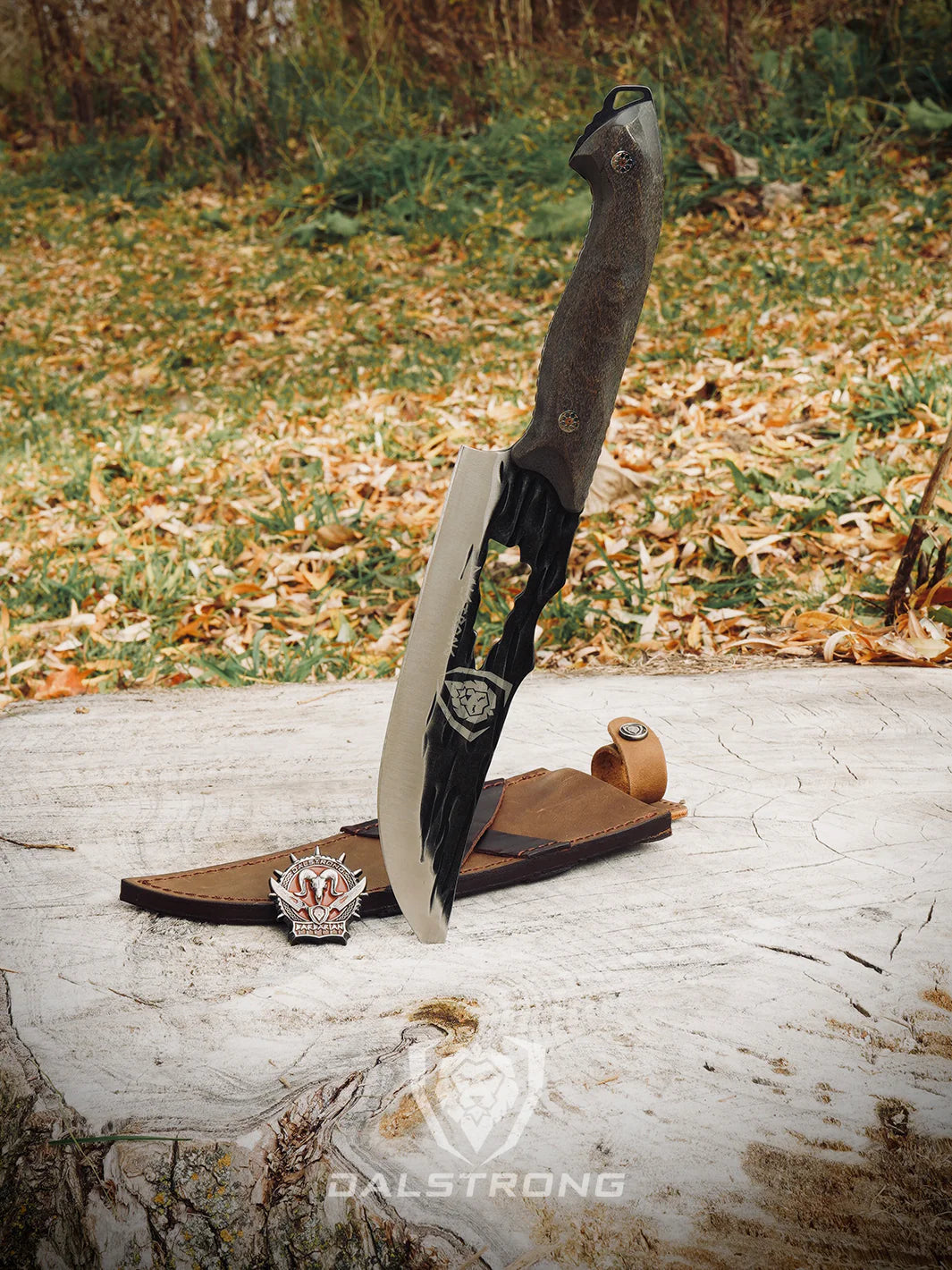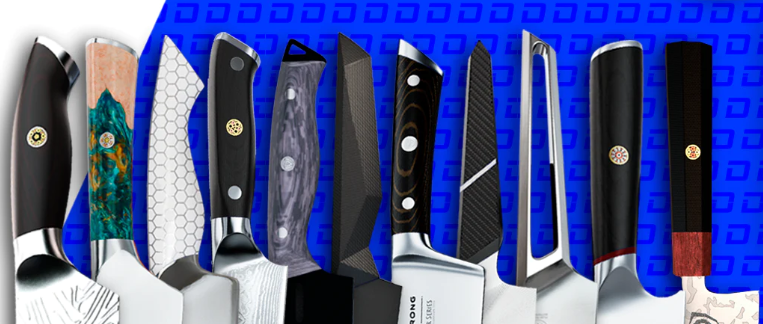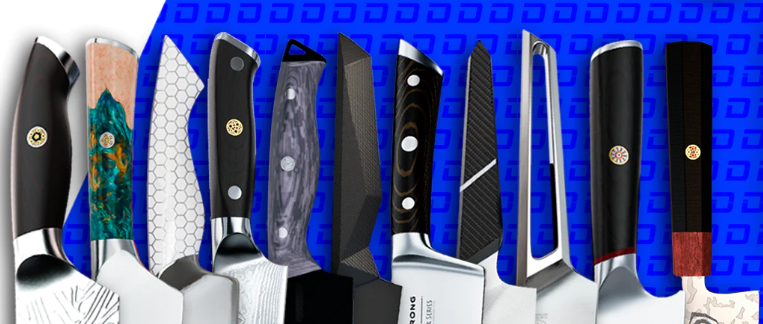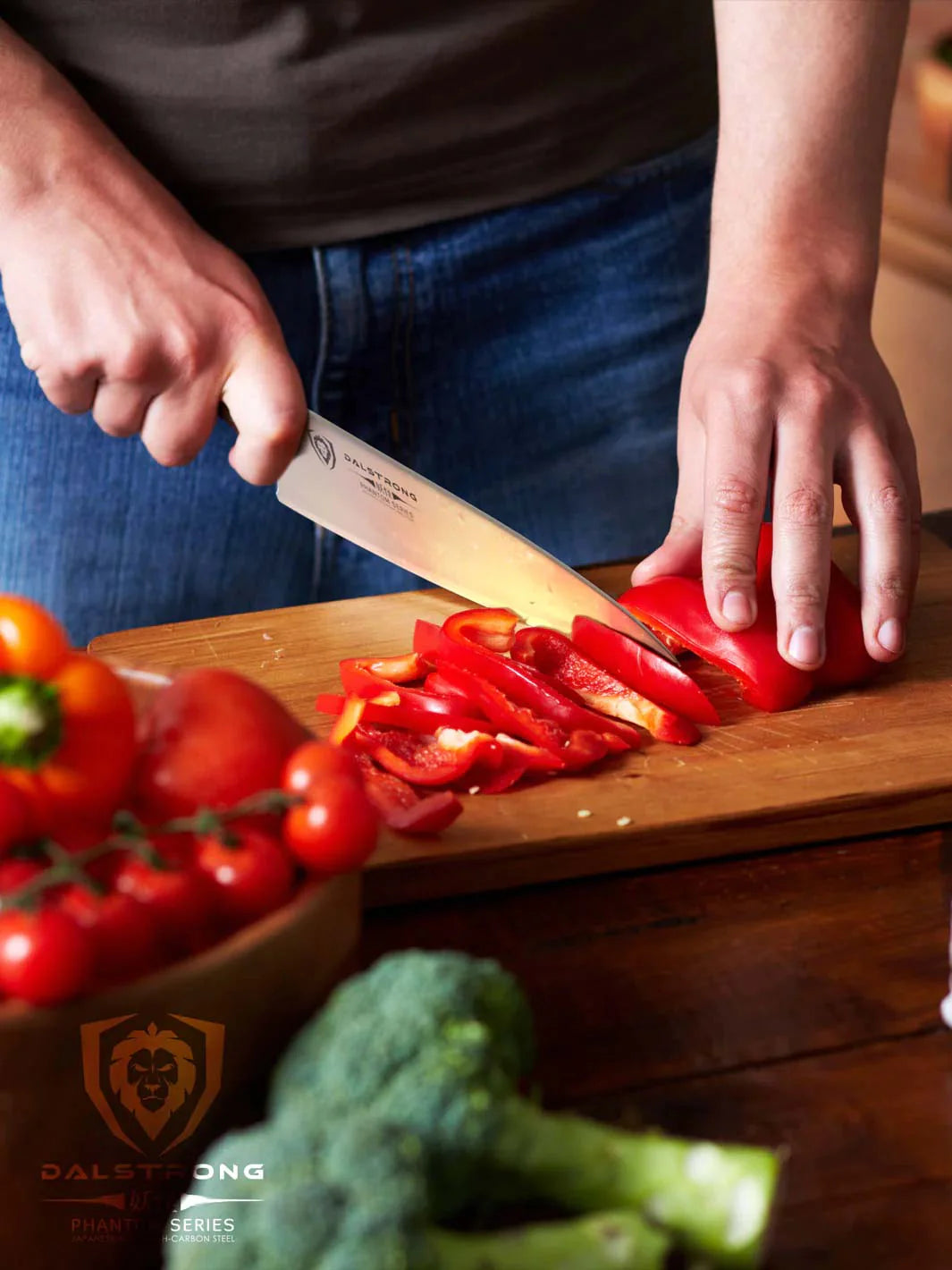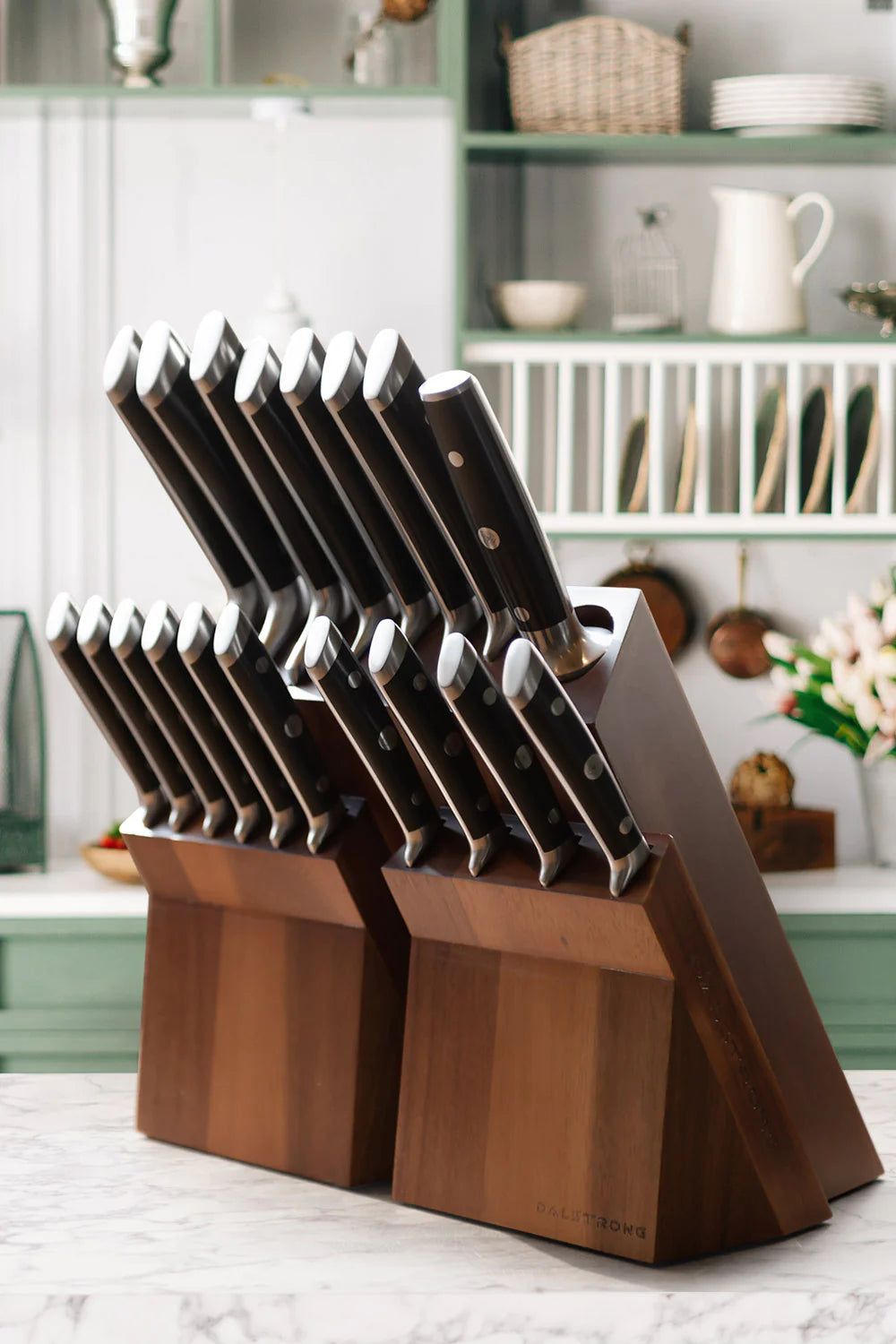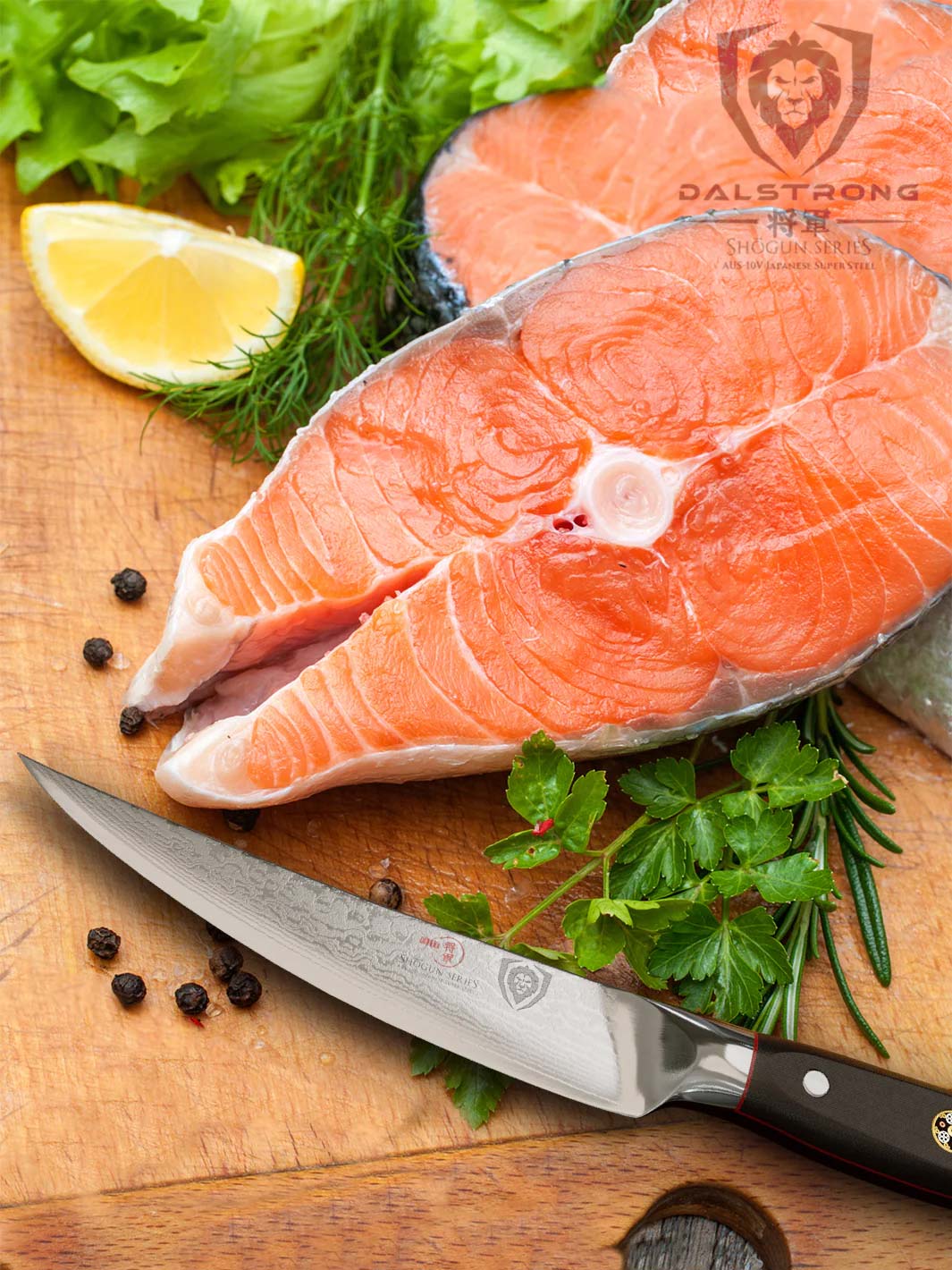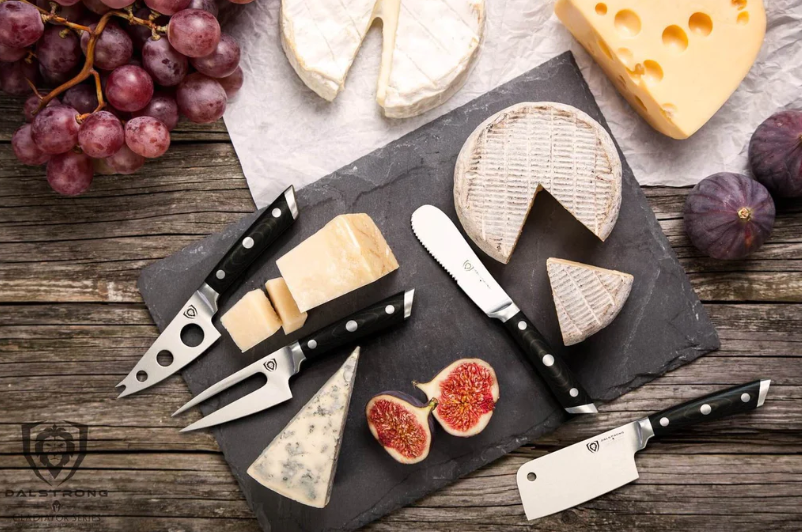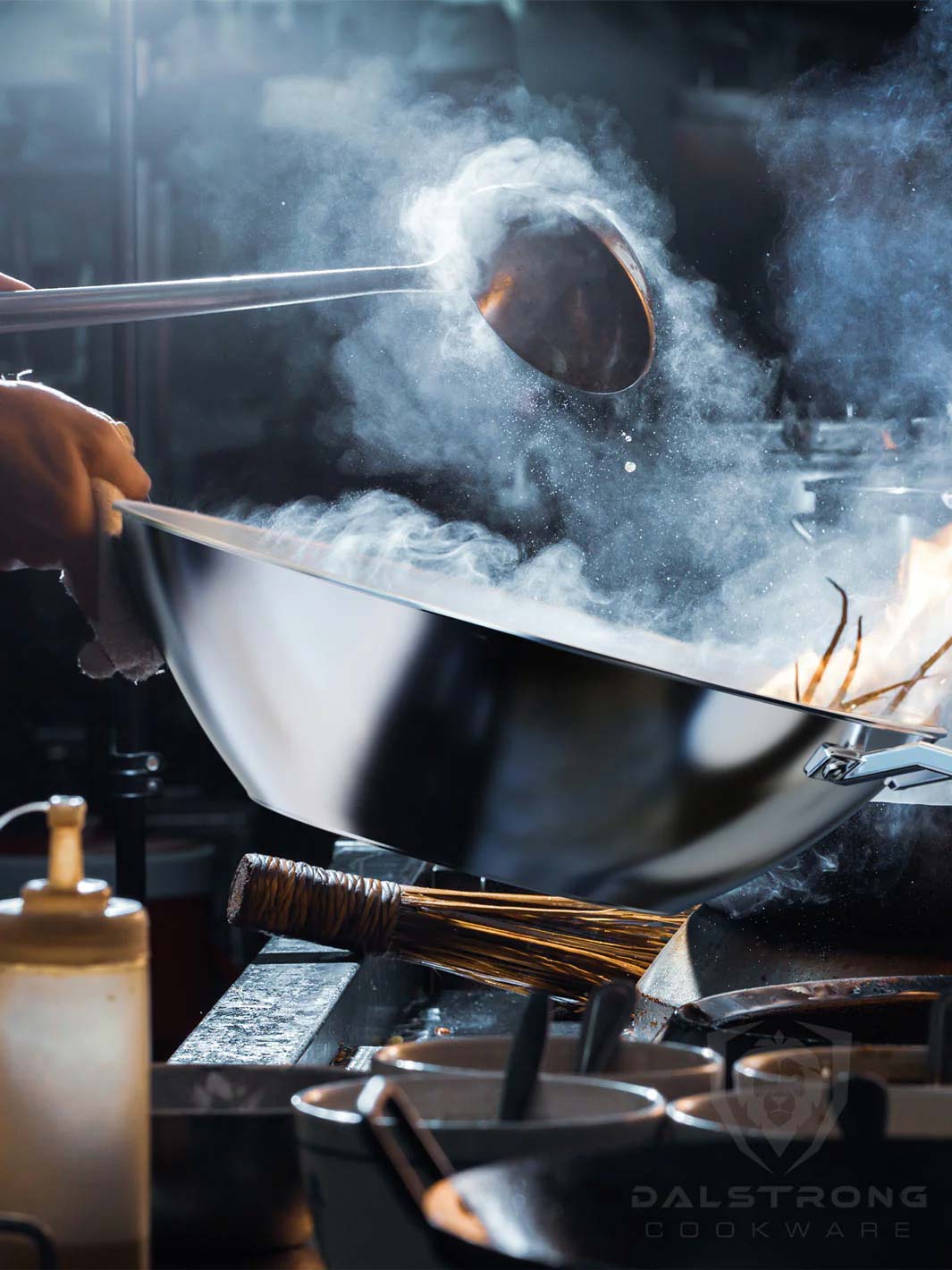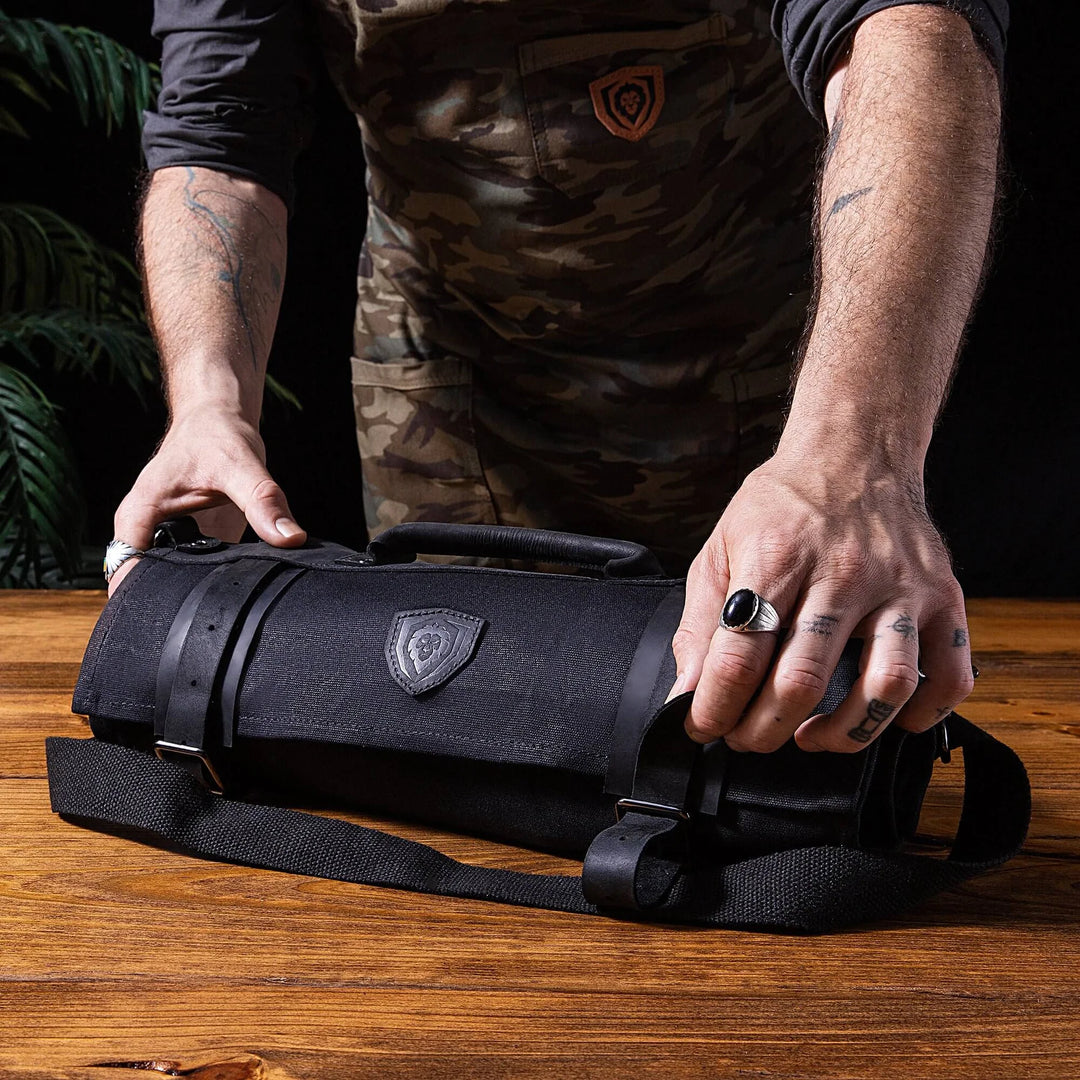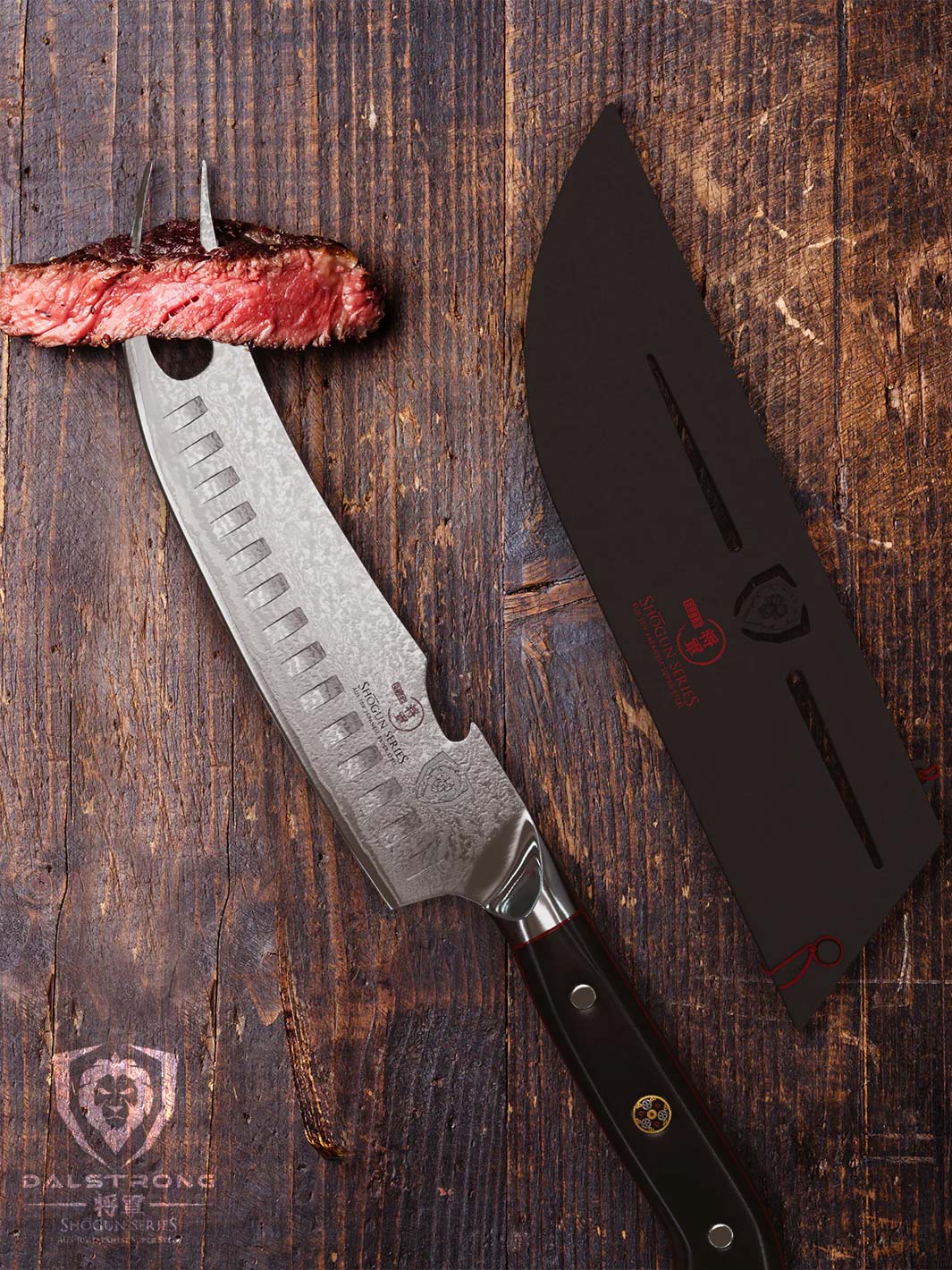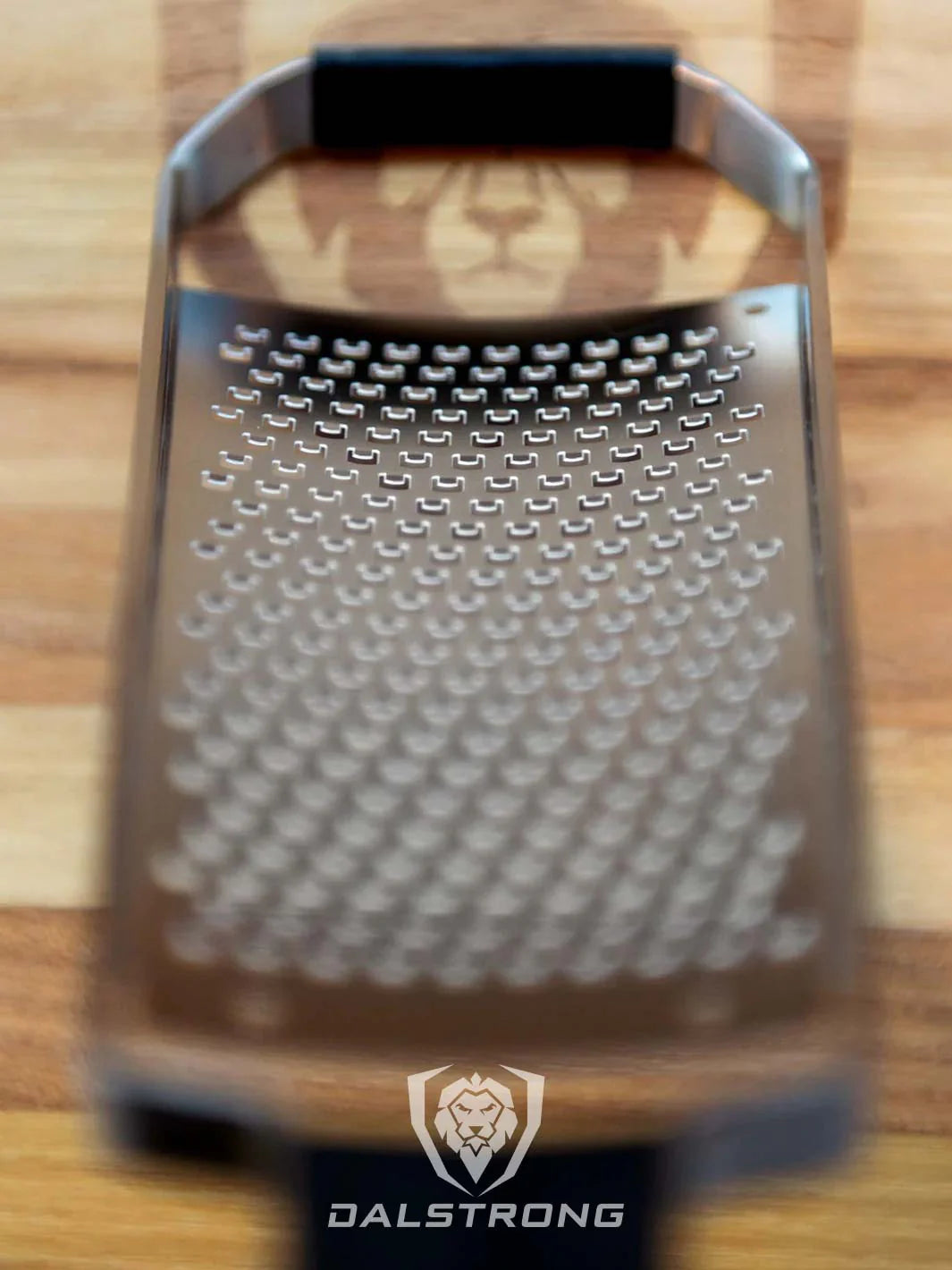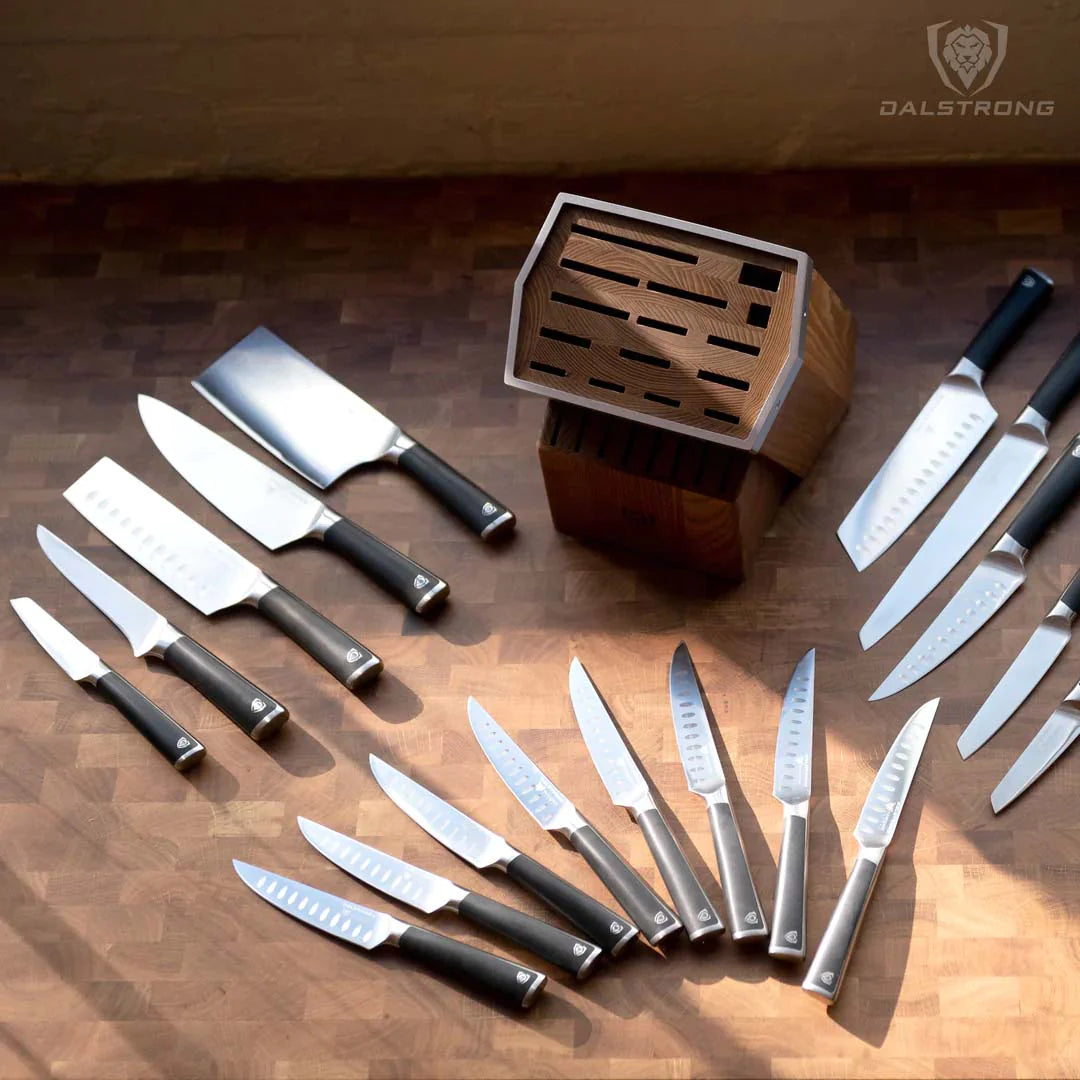Can You Freeze Block Cheese?
 4-Piece Cheese Knife Set | Shadow Black Series | NSF Certified | Dalstrong
4-Piece Cheese Knife Set | Shadow Black Series | NSF Certified | Dalstrong
Yes! You can freeze block cheese. But there are a few different ways to do it. Let's delve into that, as well as what other cheeses can be frozen (and how).
1. Why We Love Block Cheese
 4-Piece Charcuterie & Cheese Knife Set | Gladiator Series | NSF Certified | Dalstrong
4-Piece Charcuterie & Cheese Knife Set | Gladiator Series | NSF Certified | Dalstrong
Block cheese is underrated. Some consider it the unsung hero in the realm of dairy, and in many ways the cornerstone for us enthusiastic home cooks. It’s been the faithful companion through countless culinary escapades. From childhood to adulthood, it's the taste of nostalgia and gourmet delights wrapped into one block of cheesy goodness.
Think back to those chilly winter nights when only a hearty grilled cheese sandwich could hit the spot. You didn't have to fuss with the complexities of fancy cheeses; no, that trusty block of cheddar or monterrey jack in the fridge was all you needed. It melted into a gooey cascade of deliciousness, sandwiched between slices of crispy, buttery bread. And who could forget that impromptu dinner party where a block cheese like cheddar, thinly sliced, elevated your charcuterie board to gourmet levels? Instantly, you became the evening's gastronomic genius, all thanks to block cheese.
What makes block cheese so special?
In many ways, it's its versatility. It can be the star of the show or a supporting act, enhancing flavors and textures in dishes from the simplest to the most elaborate. Have you ever thrown some cubes of block cheese into your ground beef mix for burgers? If not, you're missing out on a secret weapon of flavor and texture. The cheese gets all melty and gives your burger a surprise pocket of deliciousness.
Moreover, the adaptability of block cheese doesn't just stop at cooking. You can grate it, melt it, slice it, or even eat it as is, paired with a fine wine or snack. With its rich flavor profiles and varying fat content, it can complement different ingredients, taking a dish from "meh" to "magnificent" in an instant.
Longevity
Stored right, block cheese can be your culinary buddy for a significant amount of time. That means no mad dashes to the grocery store when you've got a hankering for some cheese-topped pasta or when you want to add a twist to your pizza cheese mix.
2. Can You Freeze Block Cheese?
 4-Piece Charcuterie & Cheese Knife Set | Gladiator Series
4-Piece Charcuterie & Cheese Knife Set | Gladiator Series
You better brie -lieve it. (Okay… okay… sorry about that one) But before you transform your freezer into a cheese sanctuary, let's get into the specifics of cheese freezing, and all that goes into it.
When we refer to block cheese, we're talking about those solid chunks of dairy delight that can be sliced, diced, shredded, or sometimes just bitten into (no judgment here). They stand in contrast to the more spreadable or crumbled variants like cream cheese or feta. The block form offers certain advantages when it comes to freezing.
First, the size and shape of block cheese mean that it has less surface area exposed to the cold compared to shredded or thinly sliced cheeses. This reduced exposure limits the risk of freezer burn, those dreaded ice crystals that can alter the flavor and texture of your favorite cheddar or monterrey jack.
Moisture is the key
However, as with all things cheesy, there's a bit of nuance. While you can freeze block cheese, how it fares post-freeze largely depends on its moisture content. Cheeses with higher moisture content, like cream cheese or ricotta, can experience textural changes more dramatically than hard cheeses like parmesan. They might emerge from their icy slumber a tad crumblier than you'd like.
Packaging is paramount
But there are ways to optimize the freezing process for block cheese to ensure they maintain their integrity. The key is packaging. Wrapping your block cheese in parchment paper, followed by an airtight container or a vacuum sealer, can help retain its moisture and protect it from the harsh freezer environment. Remember, the goal is to keep the cold air out and the cheesy goodness in.
So, the next time you're staring at a sale of block cheeses and wondering if you can stock up, the answer is a resounding yes. But like all great adventures, a little preparation and understanding can make all the difference.
3. What Kind Of Cheese Can You Freeze?
 Professional Extra Coarse Wide Cheese Grater | Dalstrong
Professional Extra Coarse Wide Cheese Grater | Dalstrong
To freeze or not to freeze? When it comes to cheese, this query takes a cheesier turn. The good news? Many of your favorite cheeses can indeed be safely sent into the wintry wonderland of your freezer. However, there are a few that might not come out with the same pizzazz they went in with. Let's dive deeper.
Cheeses you can freeze
Hard cheeses
The stalwarts of the cheese world, like parmesan, endure the freeze-thaw process remarkably well. Due to their low moisture content and firm texture, hard cheeses emerge from their frozen sojourn much like they entered – robust in flavor and largely unchanged in texture. Whether you're looking to grate some atop your favorite pasta or enjoy a sliver with wine, frozen parmesan won't disappoint.
Semihard cheeses
A step down from the hard cheeses, semihard varieties such as cheddar and monterrey jack are also up for the freezing challenge. Their balanced moisture content means they can handle the cold without turning into a crumbly or mealy mess. They might lose a bit of their smoothness, but when melted on a burger or in a quesadilla, you'll be hard-pressed to spot the difference.
Shredded cheese
Have you ever had that spontaneous urge to whip up a cheesy dish, only to find you're short on cheese? Enter frozen shredded cheese. This lifesaver can go directly from freezer to oven, making it perfect for impromptu pizza nights or tacos. The freezing process barely touches the flavor and texture, especially since these cheeses often end up melted, where any minor changes become imperceptible.
Cheeses you shouldn't freeze
Soft cheeses
These spreadable wonders, including cream cheese, cottage cheese, and ricotta cheese, have a high moisture content. Freezing can cause ice crystals to form within, leading to a grainy or crumbly texture upon thawing. While they might still be alright for cooking, expecting the same smooth spread on your morning bagel might set you up for disappointment.
Cheeses meant to be eaten fresh
Some cheeses are celebrated for their fresh, delicate flavors and textures. Feta cheese, known for its tangy bite, and goat cheese, acclaimed for its creamy consistency, can lose their edge when frozen. The water content in these cheeses can lead to texture changes, making them less enjoyable in their raw form post-freezing. That being said, if you're planning on using them in a cooked dish, like a spinach and feta stuffed chicken breast or a creamy goat cheese pasta, you might just get away with it.
Knowing which cheeses to freeze (and what the effect will be on their overall flavor and texture) is crucial. When in doubt, consider the moisture content, intended use post-freezing, and the importance of texture in your final dish. Happy freezing!
Read about the health benefits and risks about cheese, here.
4. The Best Way To Freeze Cheese
 4-Piece Charcuterie & Cheese Knife Set | Gladiator Series | NSF Certified | Dalstrong
4-Piece Charcuterie & Cheese Knife Set | Gladiator Series | NSF Certified | Dalstrong
For best results, take these points into consideration.
- If your cheese is in its original package, make sure to put it in an airtight container or vacuum sealer.
- If you're using freezer bags, push out the excess air. Nobody likes freezer burn, especially on cheese!
- Wrap block cheese like cheddar in parchment paper, followed by aluminum foil to protect against ice crystals.
- Label with the date, especially if you're one of those "I found this in the back of the freezer from a dinner party in 2015" type of folks.
- Frozen cheese has a shelf life of up to six weeks, so enjoy it while it's fresh!
5. How To Slice And Shred Cheese

Just taken your cheese out of the freezer and contemplating the next steps? If the burning question on your mind is whether you can still slice or shred that frosty block, we've got some gouda news for you. The answer is a resounding, cheesy "yes."
The secret to success lies in working with the cheese when it's still slightly frozen. This semi-frozen state not only gives you better control but also ensures smooth slicing and shredding, especially when using tools like a grater. A helpful tip to bear in mind: harder cheeses, such as parmesan, glide seamlessly under the knife, making slicing a breeze.
However, be cautious with soft cheeses like cream cheese; if they get too warm during the process, you might just find yourself with a delightful, albeit melty, cheese puddle on your hands.
6. Dalstrong Tools You Need
1. 4-Piece Cheese Knife Set | Shogun Series ELITE | NSF Certified
Whether you're a culinary pro or just someone who appreciates the art of a perfect charcuterie board, this 4-piece charcuterie & cheese knife set can help you class up any social gathering. Expertly engineered to handle various types of cheeses, meats, spreads, and more, each knife in this all-inclusive set is crafted to serve a distinct purpose. From the 4” mini cleaver, ideal for hard cheeses and cured sausages, to the forked cheese knife, soft cheese knife, and rounded-tip serrated cheese knife, this set ensures that your charcuterie board is a hit every time.
PROS:
- Every knife is tailored for a specific use, from hard cheeses like parmesan to soft cheeses like brie, ensuring perfect cuts and slices every time.
- The knives are crafted from Japanese AUS-10V super steel core, ensuring long-lasting performance and incredible edge retention.
- Each knife comes with a premium-quality leather Dalstrong PerfectFit sheath, ensuring the blade's protection and longevity.
- The full tang blade design, combined with a non-slip grip and ergonomic handle, gives great durability and comfort during use.
CONS:
- With the various knife types, beginners may need a learning curve to identify which knife suits each cheese type best.
- While the knives are rust and corrosion-resistant, hand washing and immediate drying are recommended to keep them looking their best.
2. Professional Ribbon Wide Cheese Grater
Whether you're looking to grate medium-soft cheeses like cheddar, colby, or gouda, or you're venturing into shredding nuts, chocolate, or zesting fruits, this professional ribbon wide cheese grater is your go-to kitchen companion. With its anti-slip, textured G10 handle and curved feet, it's not just efficient but also ergonomically designed for comfort. The sturdy 304 stainless steel construction promises durability, making it resistant to the common kitchen elements from citrus to heat and humidity.
PROS:
- The dual-direction grating feature makes it perfect for zesting lemons, grating medium-soft cheeses, and even prepping fruits for your favorite dishes.
- The 304 stainless steel construction means it won’t succumb to the corrosive effects of citrus or other kitchen elements.
- The slim, trim design not only saves space but is also an elegant addition to any kitchen setting.
- Safety is ensured with its blade guard and sheath, ensuring you remain cut-free while it's safely stored away.
CONS:
- With its multiple functionalities, beginners might need a bit of time to master all its uses.
- If you'd rather have a coarse wide cheese grater, check out this one instead.
3. 4-Piece Cheese Knife Set | Shadow Black Series | NSF Certified
This Shadow Black Series Cheese Set isn't just about slicing through your favorite cheddar or brie; it's about making a statement. Tailored to cater to various cheese types from soft to hard, each knife is more than just a tool; it's a work of art. The midnight black, ergonomic handle provides a firm grasp, and it looks absolutely amazing. From the soft cheese knife, forked-tipped spear, hard cheese knife, to the mini cleaver, each piece is designed for unparalleled performance.
PROS:
- Expertly engineered with each knife having a distinct purpose, ensuring every type of cheese, from brie to aged cheddar, is catered to with precision.
- The Titanium Nitride non-reflective coating on each blade not only looks fantastic but also offers enhanced corrosion resistance and non-stick properties.
- Crafted from a single piece of high-carbon 7CR17MOV-X super-steel, you're guaranteed robustness and long-lasting edge retention.
- The ergonomic handle design gives a comfortable grip, while the G10 handle ensures durability against heat, cold, and moisture.
CONS:
- The aggressive and unique design might not appeal to everyone, especially if one prefers a more classic look.
- With multiple specialized knives, users new to cheese may require some time to familiarize themselves with which knife suits each cheese best.
4. Mini Cleaver Knife 4.5" | Phantom Series
This mini cleaver is perfect for swiftly chopping cured meats and cheeses. It also shines when you're slicing beef or mincing herbs. And its wide blade serves as a handy scoop for transferring your chopped food. An excellent tool for cheese enthusiasts.
PROS:
- Boasts a hybrid design, seamlessly blending the capabilities of a full-sized cleaver with a utility knife, making it versatile in the kitchen.
- The wide blade doubles as a scoop, facilitating an easy transfer of chopped foods, especially handy for cheeses and cured meats.
- The handle isn’t just about the looks; its traditional Japanese D-shaped design guarantees optimal control and comfort for every slice and dice.
- Equipped with a ruthlessly sharp, hand-finished edge, this knife ensures every cut is smooth, swift, and precise.
CONS:
- Given its unique design, there might be a slight learning curve for those used to traditional knives.
- The intricacies of the blade engravings, while beautiful, may demand a bit more attention during cleaning.
5. 4-Piece Charcuterie & Cheese Knife Set | Gladiator Series
With this gorgeous set by your side, you're more than ready to tackle everything from a creamy brie to a tough gorgonzola. Crafted meticulously from German stainless steel and complemented by a premium G10 Garolite handle, this ensemble not only looks sharp but performs with precision.
PROS:
- Looks absolutely beautiful, merging form and function into a great charcuterie cheese set.
- The high-carbon German stainless steel promises longevity, so your investment is well worth it.
- Comes complete with PerfectFit Dalstrong Sheaths, ensuring each knife is safely stored when not in use.
- NSF certified, giving you an added assurance of its quality and safety standards.
CONS:
- With its specialized design for cheeses and charcuterie, its usage might be limited for other kitchen tasks.
- The set might be a bit overwhelming for a casual cheese enthusiast, given its comprehensive range.
7. Frequently Asked Questions
Can I freeze cream cheese?
Soft cheeses like cream cheese can be frozen, but its texture might change upon thawing; it's recommended for use in cooked dishes afterward.
Can I freeze blue cheese?
Blue cheese can be frozen, though its strong flavor might intensify.
Can I freeze cottage cheese?
Cottage cheese can be frozen; however, due to its water content, it may separate and is best suited for cooking.
Does freezing cheese alter its taste?
Hard cheeses, especially parmesan, generally retain their flavor when frozen, while softer cheeses might undergo slight taste alterations.
Should I thaw frozen cheese in the fridge?
For optimal flavor and texture retention, always thaw frozen cheese in the refrigerator.

















































































































































